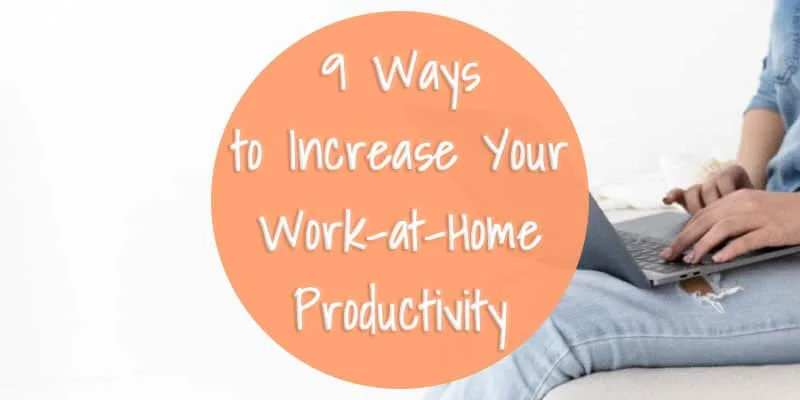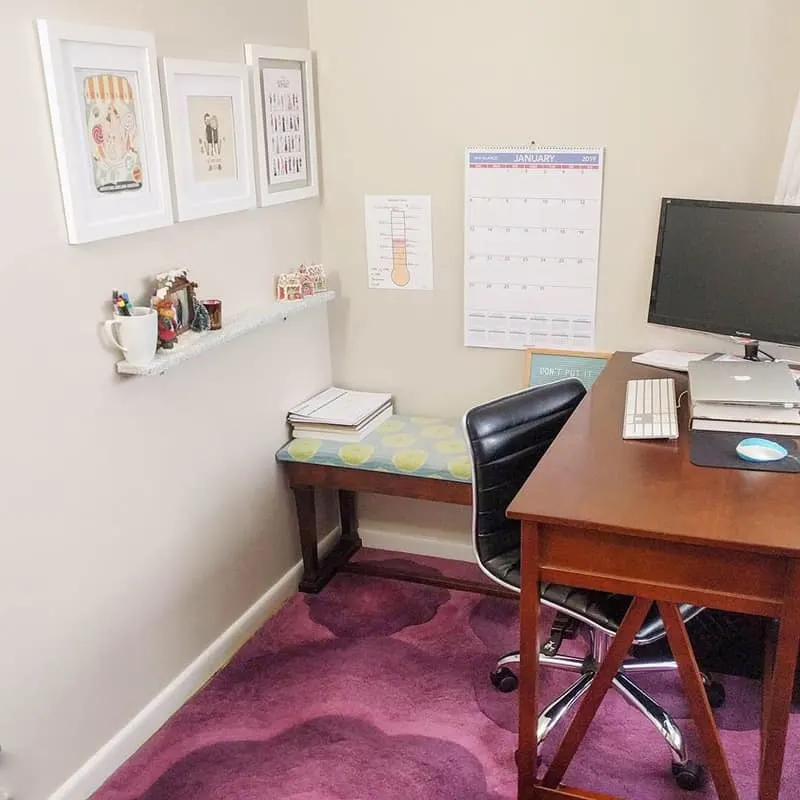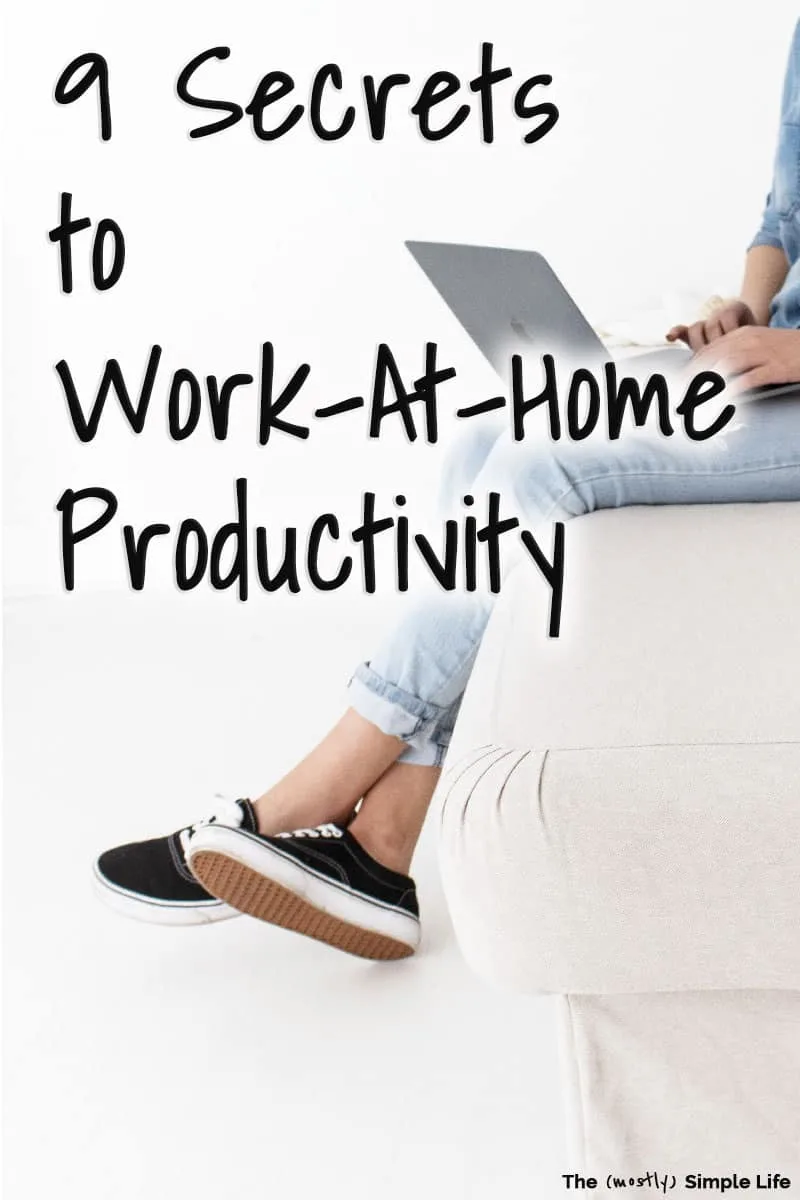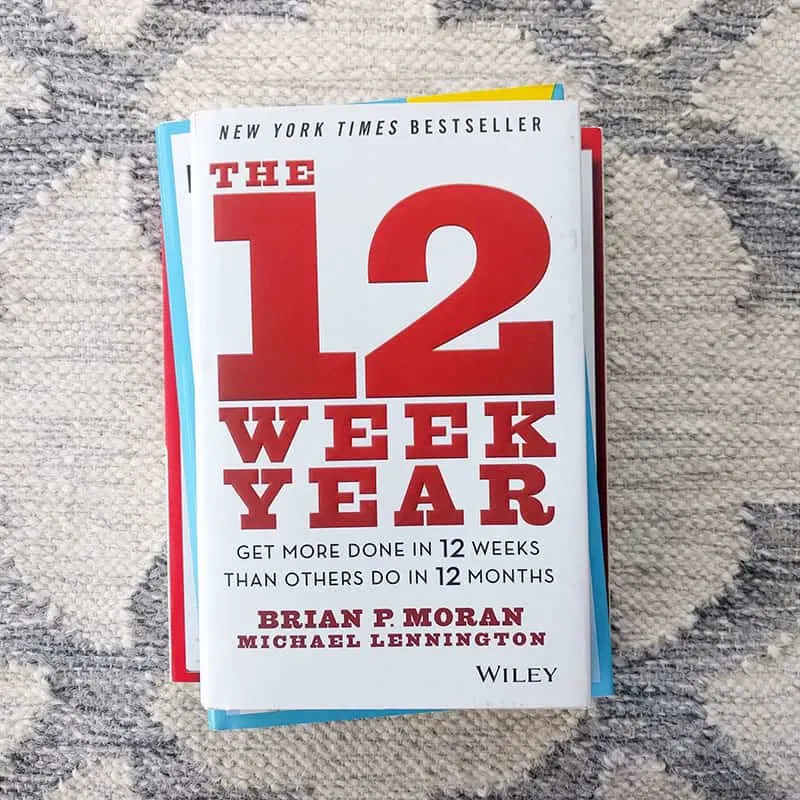
Some days I feel like I’ve been insanely busy but I haven’t gotten anything important done. Other days, Hulu and a nap are calling me.
I adore working from home, but it’s not all that easy to be productive when you work from home. There are endless distractions at home that you don’t have to contend with in a normal workplace.
I’ve gotten pretty good at getting a lot of work done while working at home (though house chores, a nap, and just one more episode still occasionally suck me in). I know you’ll be able to apply these work-at-home productivity tips this week and instantly see positive results!
9 Ways to Increase Your Work-at-Home Productivity
1. Be Clean and Comfy
These are a lot of opinions about how dressed up you should be to work at home. Some people are fine working in their pajamas all day and others firmly believe in getting dressed, with hair and makeup done. Like all of my tips, I think you need to do what works best for you, which can take some experimentation.
In general, I find that I need to be clean and comfy to be at my most productive. I feel grungy if I stay in my pajamas all day, which is distracting. But I also find jeans and a blouse uncomfortable, which is distracting.
Most days, I wake up, get cleaned up, and change into fresh leggings and a tank top. I’ll do a fast and simple hairstyle and only put on makeup when necessary.
I can focus on work when I feel clean and am not distracted by what I’m wearing, so clean and comfy equals work-at-home productivity!
2. Create a Separate Space
While I do work on the couch, outside, or at the kitchen counter here and there, I definitely do my most productive and focused work at my desk.
A separate workspace is a must. It doesn’t have to be a whole room if you don’t have the space. A separate corner of your bedroom or living room can work just fine. Claim that space as your own, get a desk or comfy chair and don’t let that space be used for anything else. When your workspace is only used for productive work, you’ll always have a productive mindset when you sit down in it.

3. Listen to Music with No Words
Most of the time I work in complete silence. It’s what works for me. If I do want some noise, I go for chill music that doesn’t have any words. I can’t hear myself think if someone else is talking/singing.
Pandora is my favorite free music source. I listen to The Piano Guys Radio and Solo Piano Radio when I want some noise that won’t distract me.
4. Have a House Chores Routine
It’s hard to work in a messy house. When you work from home, being confronted with your messy home all day, every day can hinder your productivity. It can either be so distracting that you can’t get much done, or you’ll find yourself doing chores all day when you should be working. Not great.
Having a routine for your household chores can take your mind off of household stresses. When I stick to my chores routine our house stays cleaner, plus I can ignore the dirty dishes in the sink because I know I have a plan for when they will get done.
I make my bed first thing in the morning. The dishes get done while I’m making dinner and the dishwasher gets run at bedtime so that I wake up to a clean kitchen. Laundry gets done on laundry day.
I’m not as distracted by our house when I have a chores routine.
5. Follow a Work Routine
A work routine can help you get into the groove of what you should be doing more easily.
It could be a daily routine where you have specific tasks you do at each part of every day, or a weekly routine where you work on certain tasks on specific days. Your brain has an easier time digging into each task if it’s used to focusing on it at the same time.
6. Use Time Blocking
Time blocking keeps me focused and is the most powerful work-at-home productivity method I use.
Each week, I assign each of the tasks I need to get done to a specific block(s) of time. I use that block of time for that task and nothing else. And I only have the time I assigned to get the task done, which might mean that I need to work quickly!
I learned about time blocking in The 12 Week Year and wrote more about how I use this strategy in this post about time blocking.
7. Make Your To Do List Early
If time blocking feels a bit too constraining for you, a to do list can help.
When you sit down to work, you can spend a lot of time thinking through all of the things you could be doing and deciding what to actually work on. If you can create a to do list for yourself the night before, you’ll know exactly what you need to accomplish when you sit down to work.
This will help you focus on the tasks at hand right away and dig in instead of spending the first part of your day making decisions about how to spend your time.
8. Schedule Buffer Time for Email, Texts, Calls, Etc.
Random little tasks like answering emails, texting, making phone calls, or checking Instagram can cause infinite interruptions to the projects you’re working on. In The 12 Week Year, I learned about scheduling “buffer time” into every day.
Buffer time is when I handle all of the little stuff that comes up throughout the day. If it’s not buffer time, then I don’t do any of those little tasks, and I also don’t have to worry about them getting done because I know that they will get handled during buffer time!
Buffer time allows me to fully focus on my work and dive deep without interruptions. It can be hard to get into the habit of not checking your email and phone while you’re working, but it will increase your work-at-home productivity so much.
9. Practice Focus
Lastly, I find being focused and productive takes practice! If your brain is not in the habit of focusing, you need to train it.
Over the last month, I was busy with getting ready to sell our house and move. I felt completely scatterbrained because each day was full of so many little random tasks and to dos. Now that I’m getting back into a normal work schedule again, I’m finding that I need to retrain my brain to focus because I’m out of practice.
If you need to practice focusing, silence your cell phone and close all of the windows that aren’t related to what you’re working on (including email!). Set a timer for 20 minutes and do focused work for 20 minutes without giving in to any distractions. Once the 20 minutes is up, take a break.
Keep giving yourself short focus sessions so that you can practice being more productive.
Don’t Miss These Related Posts:
- How to Be More Productive with Time Blocking
- My 2018 Blog Income Report: Full-Time Income!
- How Do Bloggers Make Money?
- 5 Ways to Make Money from Home That Actually Work!
Being productive when you work at home comes down to good routines, the right environment, and practice!
It took me a while to figure out how to improve my work-at-home productivity. I hope you’ll give some of these tips a try to see if they also work for you!



Chris
Monday 2nd of September 2019
I don't want to be negative, but oh, I don't like the new set up. :( I love your blog and just like to read the newest post every week since I read it regularly. Now I have to hunt for the latest post. Do you have an email newsletter that will link to your latest post?
Christine
Wednesday 4th of September 2019
OK! I added a button that will take you to the newest posts :)
Christine
Tuesday 3rd of September 2019
Thanks for your opinion Chris! It's something I'm testing out for a bit. If you're on my email list, I send an email every Tuesday with the newest post. Signing up for any of my printables will get you on my email list. Meal Plan Printable or Spending Tracker Printable